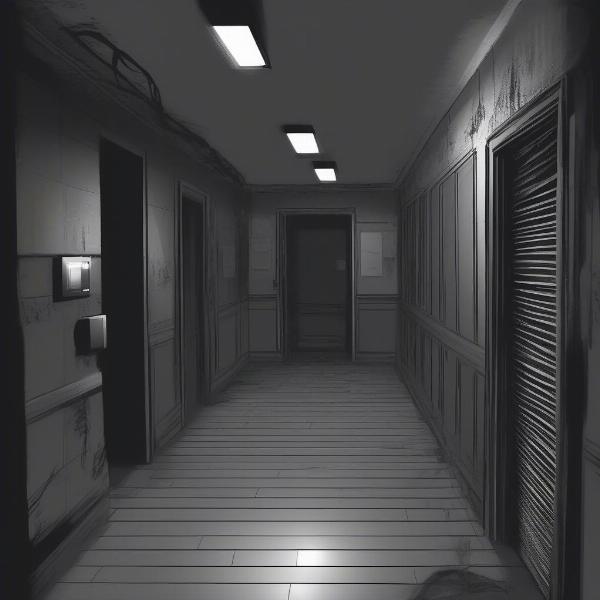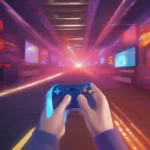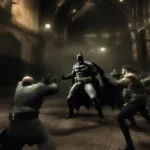Creating your own Five Nights at Freddy’s (FNAF) game can be a rewarding experience, allowing you to explore your creativity and contribute to a vibrant fan community. This guide will walk you through the process, covering everything from choosing the right software to designing chilling animatronics and building suspenseful gameplay.
Similar to the development of many indie games, creating an FNAF game requires a blend of artistic vision and technical skills. Whether you’re a seasoned game developer or just starting out, this guide will equip you with the knowledge you need to bring your FNAF nightmares to life.
Choosing Your Development Tools
The first step in How To Make Fnaf Games is selecting the right software. Several game engines are popular choices for FNAF fan games, each with its own strengths and weaknesses. Clickteam Fusion 2.5, the engine used for the original FNAF games, is known for its user-friendly interface and event-based system. For beginners, this can be an excellent starting point. Alternatively, more advanced engines like Unity and Unreal Engine offer greater flexibility and power, but require a steeper learning curve. Consider your experience level and the scope of your project when making your decision. For 2D games, GameMaker Studio 2 is also a viable option, offering a balance between ease of use and advanced features.
 Selecting the Right Game Engine for Your FNAF Project
Selecting the Right Game Engine for Your FNAF Project
Designing Your Animatronics: Bringing the Nightmare to Life
FNAF games are renowned for their terrifying animatronics. Designing these creepy characters is crucial to capturing the essence of the franchise. Start by sketching out your animatronic concepts, focusing on unique features and unsettling details. Consider their backstories and how their designs reflect their personalities. Once you’re satisfied with your sketches, you can begin modeling them in 3D or creating 2D sprites, depending on the style of your game. Remember, the goal is to create characters that are both visually appealing and genuinely disturbing.
Building Suspense and Gameplay
The core of any successful FNAF game lies in its ability to build suspense and create a truly terrifying experience. Limited resources, flickering lights, and strange noises are all classic elements of the FNAF formula. Consider how you can use these elements to create an atmosphere of dread and uncertainty. Think about the layout of your game’s environment and how it can contribute to the overall sense of claustrophobia and fear. Jump scares, while effective, should be used sparingly to avoid becoming predictable. Focus on creating a sustained sense of unease that keeps players on edge.
 Building Suspense and Gameplay in FNAF Games
Building Suspense and Gameplay in FNAF Games
Programming the Game Logic
Once you have your assets and environment in place, it’s time to bring your FNAF game to life through programming. This involves implementing the game’s mechanics, such as animatronic movement, camera controls, and power management. If you’re using Clickteam Fusion 2.5, you’ll primarily be working with its event-based system. Other engines, like Unity and Unreal Engine, utilize scripting languages such as C# and C++. Regardless of the engine you choose, it’s essential to plan out your game’s logic carefully to ensure a smooth and engaging player experience.
Sound Design: Amplifying the Fear
Sound design plays a vital role in creating a truly immersive and terrifying FNAF experience. The creaking of metal, the distant footsteps, and the chilling whispers of the animatronics are all crucial elements in building suspense. Use a combination of pre-recorded sounds and sound effects generated within your game engine to create a rich and unsettling auditory landscape. Experiment with different sound combinations to find what works best for your game.
Polishing and Playtesting
Before releasing your FNAF game, thorough playtesting is essential. Have friends and fellow developers play your game and provide feedback on the gameplay, scares, and overall experience. Use this feedback to refine your game, fix bugs, and improve the overall polish. Remember, even small details can significantly impact the player’s experience.
 Refining Your FNAF Game Through Playtesting
Refining Your FNAF Game Through Playtesting
Related Topics in FNAF Game Development
Choosing the Right Story and Lore
A compelling story and well-developed lore can significantly enhance the player’s immersion and engagement. Think about the backstory of your animatronics, the history of the location, and the overall narrative that ties everything together.
Creating Custom Night Modes
Custom Night modes allow players to customize the difficulty and challenges they face, adding replayability to your game. Consider offering various options and combinations to keep players engaged.
Incorporating Puzzles and Mini-Games
Puzzles and mini-games can add an extra layer of depth and complexity to your FNAF game. These elements can break up the tension and provide players with new challenges to overcome.
Similar to the early days of the franchise, experimenting with new ideas can lead to innovative and engaging gameplay. You can discover more about this by looking into what was the first fnaf fan game.
Conclusion
Creating your own FNAF game requires dedication, creativity, and technical skills. By following this guide and utilizing the resources available, you can bring your own terrifying vision to life. Remember to embrace the unique atmosphere and gameplay mechanics that define the FNAF franchise, and don’t be afraid to experiment and add your own personal touch. Now, go forth and create your own FNAF nightmare!
FAQ
- What is the easiest software to use for making FNAF games? Clickteam Fusion 2.5 is often recommended for beginners due to its user-friendly interface.
- Can I make a FNAF game for free? Yes, many free game engines and resources are available for aspiring developers.
- How long does it take to make a FNAF game? The development time varies depending on the scope and complexity of the project.
- Where can I share my FNAF fan game? GameJolt and Itch.io are popular platforms for sharing fan games.
- Do I need 3D modeling skills to make a FNAF game? Not necessarily, 2D FNAF games are also popular and can be equally effective.
- How can I make my FNAF game scary? Focus on building suspense, using sound design effectively, and creating unsettling animatronics.
- Are there any legal considerations for making FNAF fan games? Be sure to respect Scott Cawthon’s intellectual property and follow his guidelines for fan game creation.

